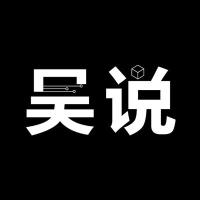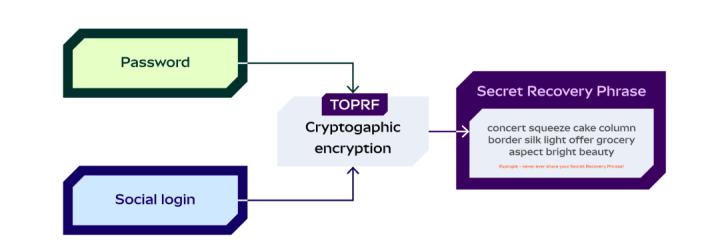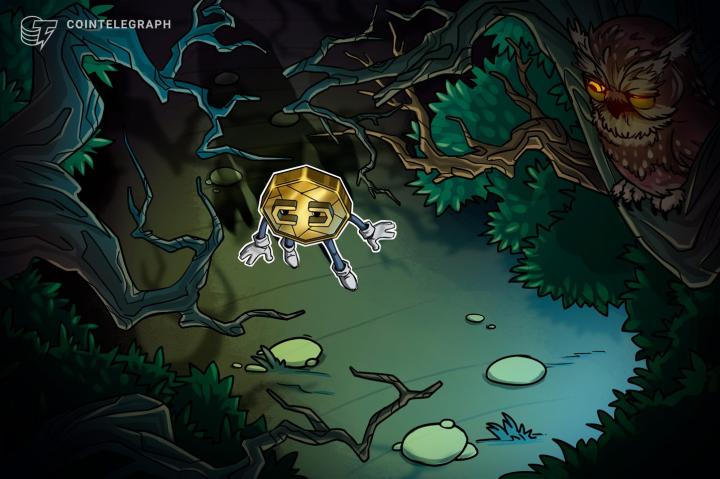Author: Marie Poteriaieva
Translator: OneBlock+
Putting aside market capitalization and hype, what ultimately determines the long-term success of a blockchain? Ethereum co-founder, Web3 concept proposer, and Polkadot creator Gavin Wood shared the five key criteria he uses to evaluate blockchains.
In an interview with Forbes, this crypto industry luminary explained which factors can make a blockchain project succeed and which can lead to their failure. He also shared some useful evaluation criteria and provided direct analysis of the currently most popular blockchain projects.
His analytical approach helps us better understand the cryptocurrency price fluctuations of leading blockchains. For example, why did ETH's market cap drop from a 2021 high of $575 billion to the current $394 billion? Why did SOL's market cap surpass its all-time high to reach $115 billion, while Polkadot's DOT (launched around the same time) dropped to $9 billion? Wood not only sees the numbers of these changes, but also identifies the key reasons behind them.
Gavin Wood speaking at the Decoded conference in Brussels in July 2024
Gavin Wood's Five Blockchain Evaluation Criteria
There are currently hundreds of blockchains, each with its own unique technology, use cases, and adoption. To help us see which blockchains have real potential, Gavin Wood outlined five fundamental criteria for evaluating them.
Resilience: The bedrock of Web3, resilience combines cryptography, decentralization, and game theory to protect blockchains from attacks and ensure their long-term stability.
Performance: Not just scalability, performance also measures a network's efficiency in processing and completing tasks.
Generality: The ability of a blockchain to support diverse applications and programmability.
Accessibility: The ease with which users, developers, applications, and bots can interact with the network.
Consistency: A system's ability to maintain fast and consistent communication within its network.
Resilience: An Uncompromisable Standard
While blockchains can focus on different features, there is one standard that cannot be compromised: decentralization and resilience. This standard is difficult to assess and requires long-term observation, but it is the most important.
Gavin Wood said: "Blockchains that ignore decentralization and resilience should not be called Web3."
He continued: "For example, we see that the L2 networks on Ethereum have a fixed set of validators managed by a particular company, right? This is clearly not a characteristic of Web3."
Evaluating a blockchain's resilience often boils down to assessing its degree of decentralization. Wood posed several questions for this assessment:
Who makes the protocol decisions?
Is the governance structure clear or low-barrier to entry?
There's also the Nakamoto coefficient, which measures the number of participants required to disrupt the network.
Finally, Wood raised a broader question, such as whether there is a single entity that can dominate the entire project's direction and "completely control the ecosystem, suppressing other voices and perspectives."
Gavin is satisfied with Polkadot's decentralization and says its Nakamoto coefficient is high. According to Nakaflow data, Polkadot currently has a Nakamoto coefficient of 149, meaning at least 149 independent validators would need to collude to disrupt the network. In comparison, other major blockchains score much lower, with Solana at 19 and Ethereum at just 2.

However, the entry barrier remains an issue.
Maurantonio Caprolu, a research scientist at Saudi Arabia's KAUST, who co-authored several papers on Polkadot with Professor Roberto Di Pietro, described this high barrier.
"Until 2022, the average stake required to become an active validator was around 1.8 million DOT (about $32 million at the time). Even now, this minimum staking requirement is still very high, effectively favoring institutional participation that can afford large DOT token holdings."
From Gavin's definition of resilience, Ethereum's weaknesses become quite apparent. Ethereum is often criticized for Vitalik Buterin's outsized influence. Particularly recent posts by him on X - "The people who decide the new EF leadership team are me" - have escalated this controversy.

One might ask: Given Gavin Wood's prominent role in Polkadot, does Polkadot also face the risk of being dominated by Gavin's narrative? Wood acknowledges that his name carries weight, but he emphasizes that Polkadot's governance is community-driven. He cited examples of community-led successful proposals, such as reducing DOT's inflation rate, as proof of Polkadot's decentralized decision-making process.
The Polkassembly governance platform further promotes community engagement and introduced an OpenGov-compatible framework in 2023. Caprolu and his team believe that OpenGov can "expand inclusivity and reduce power concentration." However, the researchers note that "since this system is still in its early stages, more time and data are needed to verify whether OpenGov can successfully mitigate the power concentration tendencies observed in Governance 1.0 (the pre-Polkadot governance model)."
Performance: At What Cost?
Different blockchains have taken various strategies to improve performance, but they face a common challenge in balancing performance, decentralization, and consistency.
Take Ethereum as an example. Wood explained: "Initially, they planned to use sharding technology, adding EVM shards to the network. But later they abandoned this plan and opted to support L2 solutions instead. Essentially, they did nothing, just letting others build the chains and relying on Ethereum to secure those chains." This approach has led to a lack of consistency and even impacted security. Wood believes that "when Ethereum combines with L2s, it's not really Ethereum anymore, because the L2s don't provide the same security guarantees."
Furthermore, Gavin believes Solana has sacrificed decentralization.
"Solana's strategy is to make its validators more powerful and ensure good connectivity between them. To achieve this goal, Solana has reduced the number of validators. Because if you want to improve the connectivity between two validators, you typically need to reduce the number of participating validators. The result is that Solana's Nakamoto coefficient has decreased, as fewer validators mean fewer participants can control the network, thus reducing the degree of decentralization."
Gavin Wood calls Solana a "highly synchronized scaling strategy," with its speed limited by the processing and synchronization speed of a single machine. While this approach can achieve early rapid scaling, it will ultimately hit hardware and network bottlenecks.
For Wood, "many other proof-of-stake chains are similar. They don't have a consistent scaling strategy; to handle more data, they just reduce the number of validators and increase the speed."
Polkadot's approach differs from Solana, as it achieves network scaling and optimization by adding more validators. Specifically, Polkadot enhances its degree of decentralization by increasing the number of validators, rather than reducing them. With more validators participating, Polkadot not only maintains decentralization but also enables the network to run faster. In other words, Polkadot "scales" to optimize performance without sacrificing decentralization for speed.
Here is the English translation:Generality: True Turing Completeness
Gavin Wood defines the generality of a blockchain by measuring the ease with which Web2 applications can be converted to Web3. More specifically, he measures generality by the number of different computational tasks a blockchain can support and the complexity of those tasks.
Ethereum introduced the concept of Turing completeness, meaning it can execute any computable task. But as Wood pointed out, Ethereum has not fully realized this. This is because it is constrained by gas limits and block size, and computations must be completed within these limits, limiting the range of complex problems it can solve.
Polkadot aims to eliminate these constraints through its parachain model. Parachains execute their own logic in a WebAssembly environment, as long as the computation is completed in a few seconds. This setup allows parachains to handle larger data sets. Currently, Ethereum allows about 15 million EVM gas per block, while for Polkadot this number is equivalent to 18 billion gas.
Nevertheless, Polkadot's generality, like Ethereum's, is still quantitative rather than qualitative. It expands computational capabilities but does not fundamentally change the scope of computation. This is set to change with the upcoming JAM upgrade, which promises to enable "continuations" - computations can be paused and resumed across blocks.
Professor Soulla Louca, head of the Blockchain Initiative at the University of Nicosia, Cyprus, believes removing the single-block computation constraint could be a major breakthrough. She explains:
"While other blockchains have mechanisms for handling complex computations (e.g., layer-2 solutions, optimistic rollups), no other blockchain currently offers an in-built continuity mechanism like the one proposed by JAM. This capability may give Polkadot a significant advantage in supporting more complex and general-purpose applications, particularly more advanced use cases like complex financial instruments, large-scale data processing, on-chain AI/ML, and the like."
Consistency: Eliminating Barriers
Consistency is a major challenge facing the blockchain ecosystem. Ethereum's L2s and Polkadot's parachains have both struggled with this. As Wood described, they operate in isolated environments, and cross-chain interactions are often slow, expensive, and potentially insecure, unless a shared ordering system is introduced. However, such a system also brings its own challenges, as it requires supercomputers for ordering, inevitably leading to centralization.
Wood acknowledges that consistency is not Polkadot's primary focus. While some integration and bridging has been done over the past year, parachains still face consistency issues.
This problem has also been pointed out by Tomaz Levak, the founder of OriginTrail. His company is developing a DeSci (decentralized science) protocol aimed at structuring and connecting real-world data for AI and enterprise applications, running on its own Polkadot parachain. Levak stated that while "the performance and customization capabilities enabled by Polkadot's technical design are uniquely suited to meet our needs," he hopes to see "strengthened bridging infrastructure between Polkadot and other blockchain ecosystems."
Accessibility: Usability Testing
In the blockchain space, the general perception is that Polkadot technology is very powerful but difficult to understand. However, Wood points out that thanks to the XCM (cross-chain messaging) system and upgrades to the ecosystem wallets, Polkadot's accessibility has significantly improved over the past year. Similarly, Tomaz Levak stated that OriginTrail's end-users "rarely interact directly with the blockchain layer, as friendly user interfaces ensure a smooth experience."
Nevertheless, the consistency issue remains a barrier to accessibility. Wood stated that JAM will address this by providing shared data availability storage, where services can be built to completely hide the consistency challenges faced by users.
In terms of developer engagement, Wood proudly pointed out that Polkadot has always had many "serious" full-time developers. In fact, the Electric Capital Developer Report shows that Polkadot's tech stack ranks third in the crypto space. Currently, Polkadot has 467 full-time developers, second only to Solana (599) and Ethereum (3562). However, Wood believes the actual number is higher, as the 35 teams working on JAM are in a closed-source environment and not included in the report.
Overall, no blockchain has yet mastered all five of these standards. As Gavin Wood said:
"Some blockchain systems are very good at performance, but lack consistency, like Polkadot. And blockchains like Ethereum may do well on consistency, but their performance is relatively poor. If you look at Solana, it does well on consistency, but lacks resilience and decentralization. So the current situation is that you can choose some of these features, but there is no blockchain that can satisfy all of these requirements at the same time."
The true winners will be those blockchains that adapt to change without compromising the core principles of Web3. The question is: which blockchain will be the first to find the balance?






